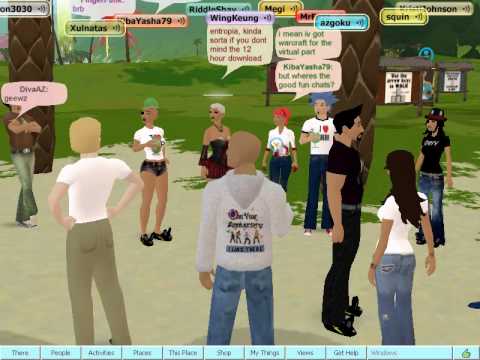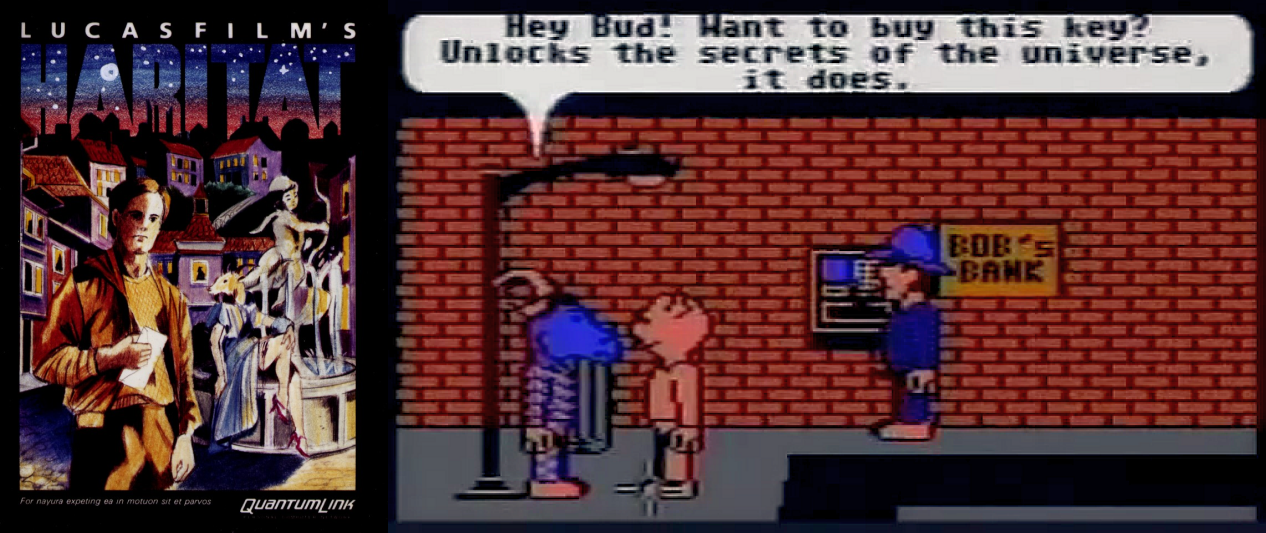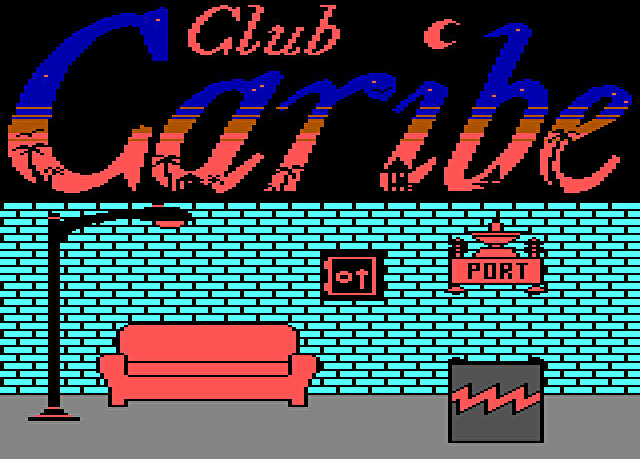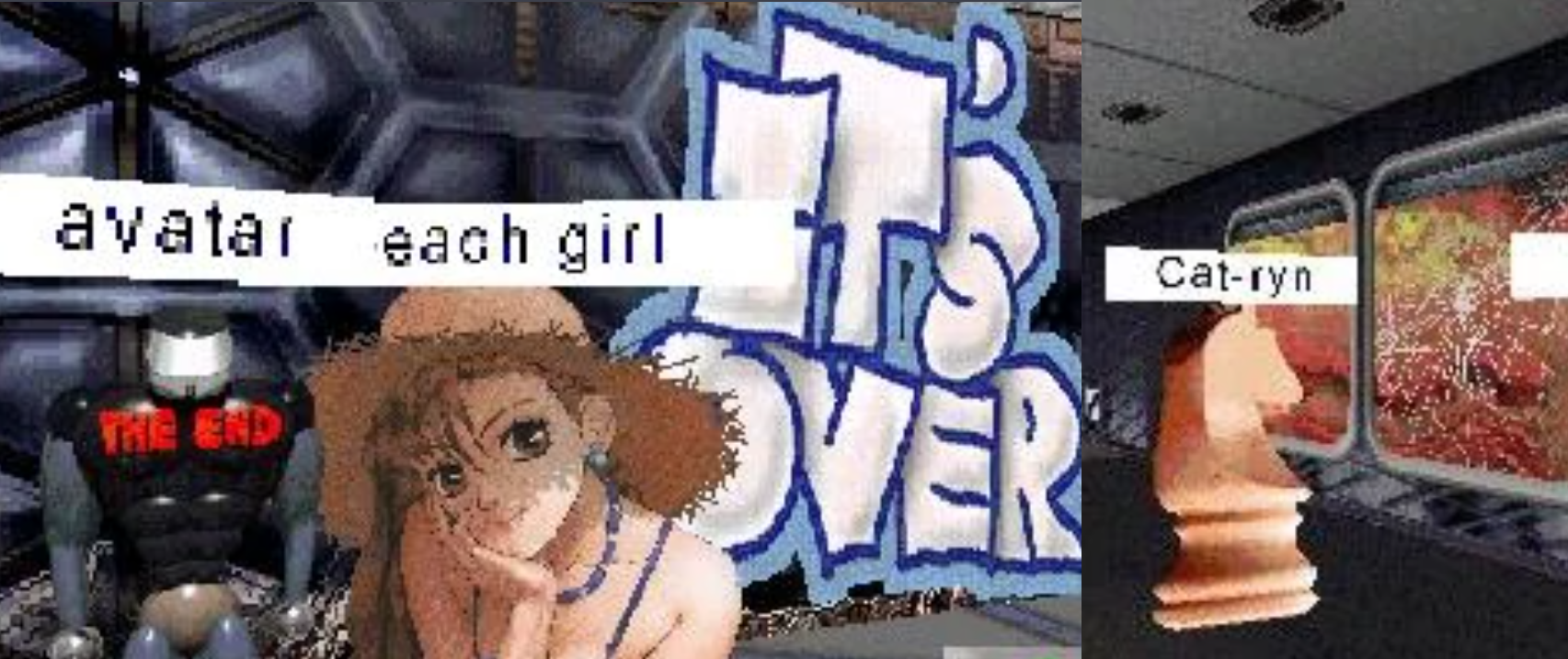
Virtual World History: Part I
A historical look at social virtual worlds leading up until the millenium and the many early lessons learnt

Virtual World History: Part I
A historical look at social virtual worlds leading up until the millenium and the many early lessons learnt
Introduction
The excitement and buzz around the Metaverse gives the impression to many casual observers that virtual worlds are a new found concept. Yet, virtual world communities have existed for decades, including vibrant economies, self governance, law & order, religion, and even virtual wedding ceremonies.
"In order to see where we are going, we must not only remember where we have been, but we must understand where we have been."
Ella Baker
The historical evolution of the space provides many interesting insights on human behaviour, economic design, and the impact of technological constraints on user adoption. As current design choices are being made for this new evolution of virtual worlds, it is important to try and avoid many of the past mistakes and build a more sustainable ecosystem.
This is a two part article, looking at some of the most influential historical virtual world communities. This first installement examines developments up until the year 2000.
Habitat (1985)

Habitat is regarded as one of the most influential virtual world communities, given the amount of groundbreaking developments that transpired during its short existence. It benefitted from the emergence of affordable home computer hardware and consumer internet connections.
Lucasfilm Games (a division of LucasArts Entertainment) in association with Quantum Computer Services, began development in 1985, it was later released to the public in 1986.
At its peak Habitat had around 15,000 players, despite only being available in the US and via certain service providers.
The environment was made up of discrete regions, which could adjoin to up to four other areas. At its peak popularity around 20,000 regions existed, each containing objects that users could interact with.
Habitat was intentionally designed to allow the broadest range of interactions possible, complete with its own internal economy, featuring banks and commerce. The unit of currency was 'Tokens', and an individuals bank account could be accessed via an ATM (Automatic Token machine).
"Among the objects we made available to Avatars in Habitat were guns and various other sorts of weapons. We included these because we felt that players should be able to materially effect each other in ways that went beyond simply talking, ways that required real moral choices to be made by the participants. We recognized the age old story-teller's dictum that conflict is the essence of drama."
The lack of rules lead to much controversy and debate amongst inhabitants as to what form the society should take. The decision was later made to only allow violence and robbery outside the city limits.
The wilderness would be wild and dangerous while civilization would be orderly and safe.
This still didn't totally resolve the situation; The community eventually elected a Sheriff in an attempt to bring order, and further discourse arouse around questions of government and due process. The outcome of this was never resolved before Habitat was eventually shut down in 1988 due to a lack of commercial viability.
During Habitat's short existence, it produced significant insights that are still relevant today to community builders and sociologists. A fascinating account is presented by Chip Morningstar & F. Randall Farmer at the 1990 'International Conference of Cyberspace' and later published in "Cyberspace: First Steps" by Michael Benedikt
The essential lesson that we have abstracted from our experiences with Habitat is that a cyberspace is defined more by the interactions among the actors within it than by the technology with which it is implemented.
Chip Morningstar
Club Caribe & Fujitsu Habitat(1989)

Despite Habitats ground breaking success, there was no escaping the lack of commercial viability. Lucasfilms were keen to recoup the expense and relaunched a more streamlined version of Habitat in 1988 called "Club Caribe" and later liscened to Fujitsu to be released in Japan in 1990 under the name "Fujitsu Habitat".
CitySpace VR (1993)

Zane Vanella launched CitySpace at SIGGRAPH 1993, and it was later presented at the VROOM (Virtual Reality Room) exhibition during SIGGRAPH 1994.
"The CitySpace project strives to present a learning model based on collaboration, simulation, visualization, and wide-area digital networking."
High technical requirements for the era and a focus on education limited its ability to reach wider audiences and the project stopped in 1996.
Web World (1994)
Rob Britvich created WebWorld as a side project in the summer of 1994. It is often regarded as the first 2.5D virtual world and operated on Peregrine System Inc servers.
He later made the decision to join Knowledge Adventure Worlds (KAW) which shortly after spun off to create Worlds Inc.
Starbright world (1994)

In 1994 Worlds Inc, began work on the Starbright world project which was commissioned by the Starbright Foundation, of which Steven Spielberg was the chairman.
The aim was to create a 3D virtual world in which seriously ill children in US hospitals could interact with one another
"Seriously ill children face lives marked by social and psychological deprivations that compound the physical trauma of their conditions. There are properties intrinsic to a networked virtual reality playspace that directly address many of these problems:
The children suffer physical isolation from friends and family when illness forces them into the hospital, compounded by social isolation if they lack a peer group that understands what it is like to fight a life-threatening affliction."
Tamiko Thiel - Producer & Creative Director
Alongside prepopulated environments, there was also provisions for "Build your own zone" (BYOZ) in which objects and building blocks could be used to create their own environment.
The project operated in US hospitals between 1995-1997. An evolving desire by the foundation to create an online community rather than just an entertinment space resulted in moving to a multimedia website, as technical limitations meant that many could not access the service after they left hospital.
WorldsAway / Dreamscape (1995-1998)
After Fujitsu's experience with the Habitat project, they decided to spin out a new division in 1994 called "Fujitsu Open System Solutions." In conjunction with Electric Communities, they began working on "WorldsAway" which was later released for free on Compuserve in 1995 under the name "Dreamscape", and later the broader internet in 1997.

To access Worldsaway you had to pay $4.95 per hour via Compuserve.
Avatar customisation revolved around a wide choice of interchangable heads, but limited body choices. Due to technical limitations, only six avatars could appear on screen at one time, but this did not restrict others from being on the sideline and interacting via chat.
Players had their own virtual apartments called "Turfs" which could be decorated and customised. This resulted in many people collecting, trading and setting up player run stores. Aparments could also be renteded for a monthly fee of tokens.
WorldsAway administrators were called "Oracles"which wore robes and their faces obscured by hoods.
In 1998 Fujitsu sold the rights to Worlds away to a new company called Vzones which still continues with the service today, but late included Managa style avatar customisation.
Worlds Chat (1995)

The World Inc team behind Starbright world later released "Worlds Chat" in April 1995, only six months after VRML was released, which required much experimentation to define best practices for consumer adoption.
It consisted of 20 rooms, and two worlds known as "sadness" and "glee". The space station had a series of connecting doors and halls, where users could interact with inhabitants in each space from a first person perspetive.
The limitations from internet connectivity represented a constraint and certain tradeoffs made.

September 13th 1996 the final beta version included a patch known as "major trauma" to the "End of the world party".
The space station was on a collision course with the red planet and numerous messages refering to "the end" and "it's over" were decorated around the world.
This marked the subsequent launch of Worlds Chat 1.0 where users were offered a limited free demo and the option of a paid "Gold Version" which allowed more customisation and worlds to be explored for $32.95.
CyberTown (1995)

Formerly known as Colony City, it ran on VRML, while utilising Blaxxuns multi-user server technology.
Citizens were encouraged to make 3D objects to use in Cybertown. These items could be sold in the city's mall, p2p or other organised marketplaces.
Inhabitants of the world could have jobs within the community, earning virtual money known as CityCash (CC's) that could be used to buy homes and items.
CyberTown was later sold in 2002 to Integrated Virtual Networks who started charging users fees.
Alpha World / Active Worlds (1995)

Gamma development kit sold from Worlds inc?
AlphaWorld was a seperate project being developed at Worlds inc, which was competing with "World Chat" (known internally as Gamma).
Released on June 28 1995, the project was renamed Active Worlds.
In Janurary 1997, worlds Inc had depleted its $15mm venture funding and failed to secure vital contracts. This resulted in the majority of the staff being laid off.
Circle of Fire, a development studio which was formed in 1995 to create content for Active Worlds, purchased the assets of ActiveWorlds and employed many of the original devleopment team.
In 1999 Circle of Fire conducted a reverse merger with Vanguard Enterprises and eventually became a publically listed company on the NASDAQ under AWLD.
Ultima Online (1997)

"There.com" (1998)

There was founded in 1998 but only began closed beta in July 2001, with an official launch in 2003.
Economy
The currency is Therebucks (T$) which could be purchased at USD$1 = T$1,800. In addition to customising their avatars, the community could create items that could be sold to the community. Free creator education was offered to novices in order to foster future creation.
Partnerships
It later had contracts to provide the technolgy for MTV networks to launch virtual world platforms for many of its hit series.
Conclusion: Part I
As the millenium drew to a close, the technology community was in a frency around the .com bubble which subsequently popped. While the promise of consumer technology was massive, the restraints and early adoption failed to make commercialisation viable for many projects.
We shall discover in part 2 that the expansion of internet speeds via DSL enabled a revivied virtual world community to emerge to greater widespread succes, but crucially building on top of the insights and technology developed during this early era.

Matthew Scott Jones
Founder & Macro Investor. Writing about online social behaviour, technology trends, and early stage startups.
Related Articles
Join the mailing list...
No spam, unsubscribe at anytime
Join the mailing list...





